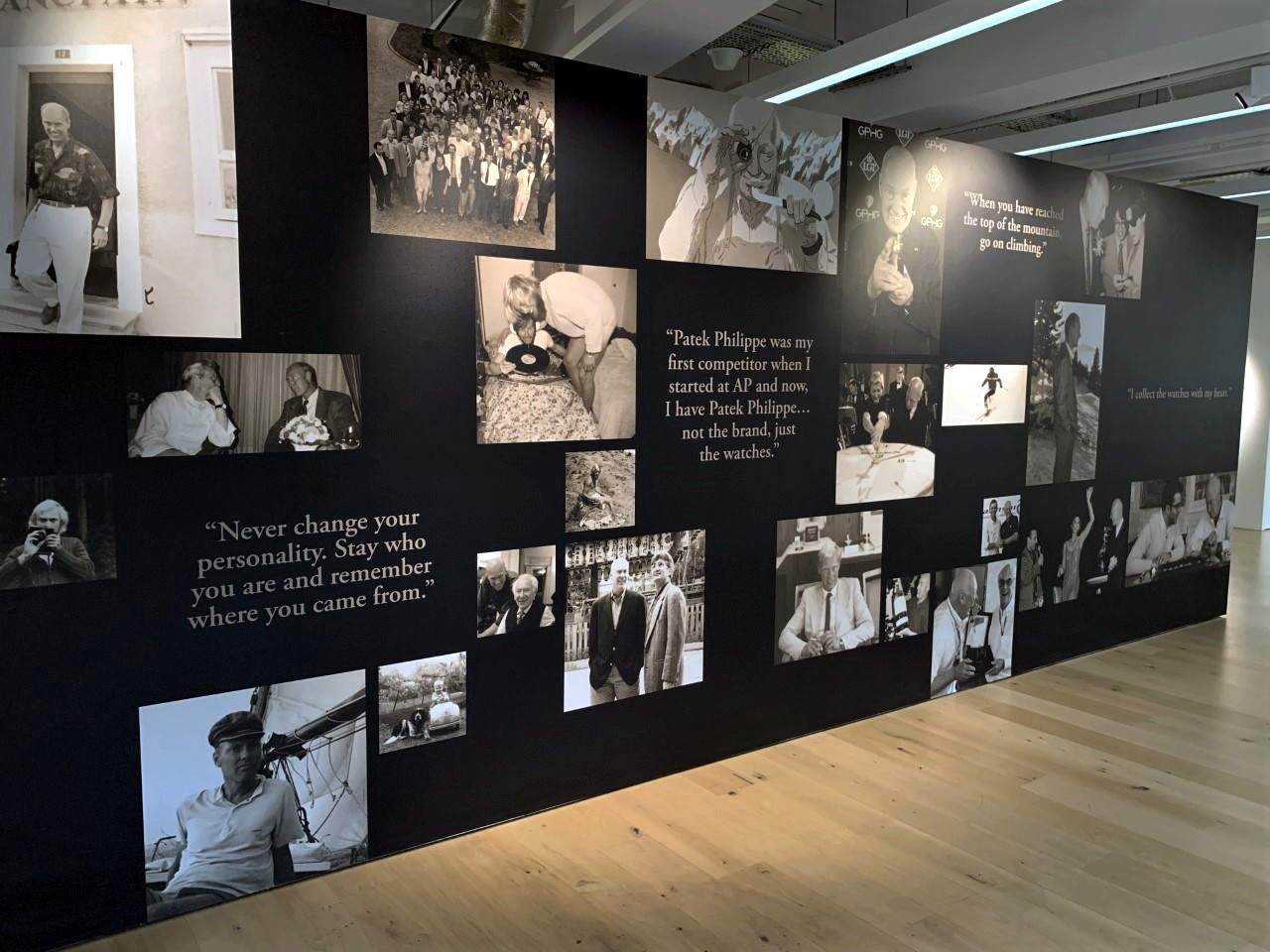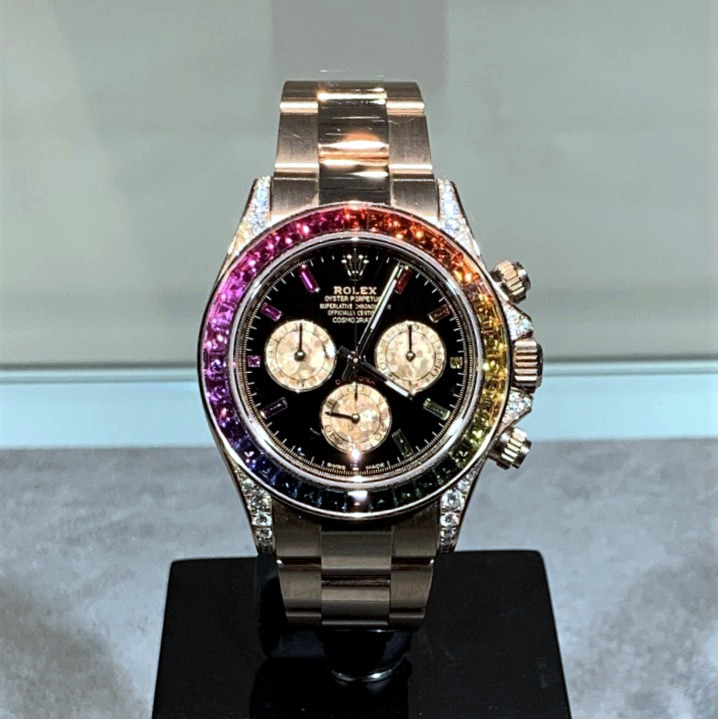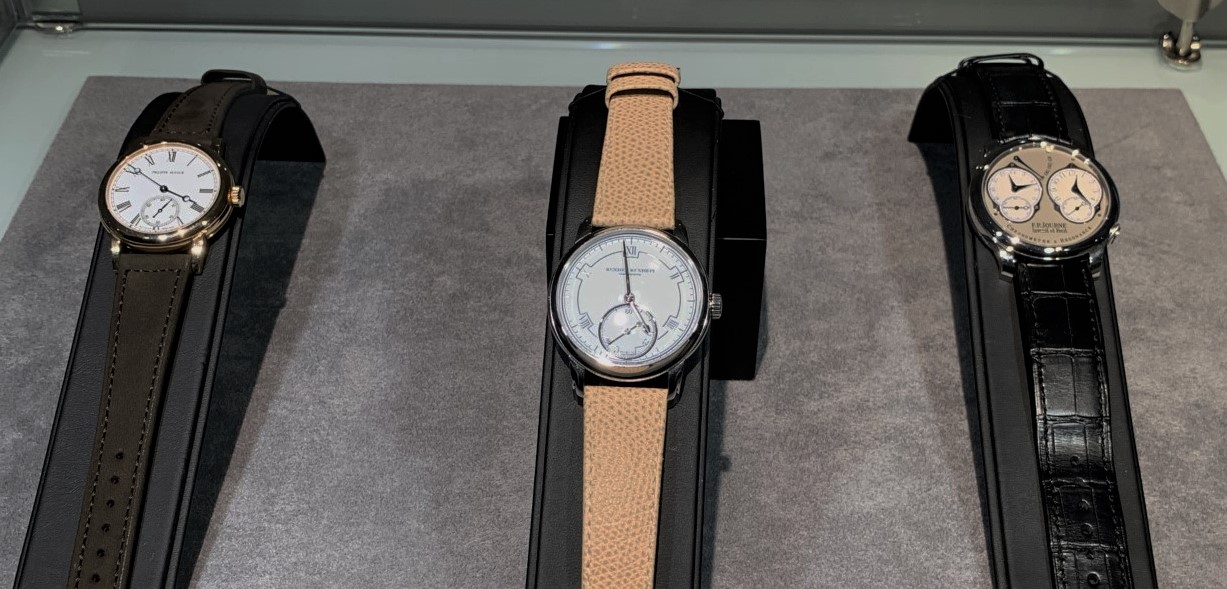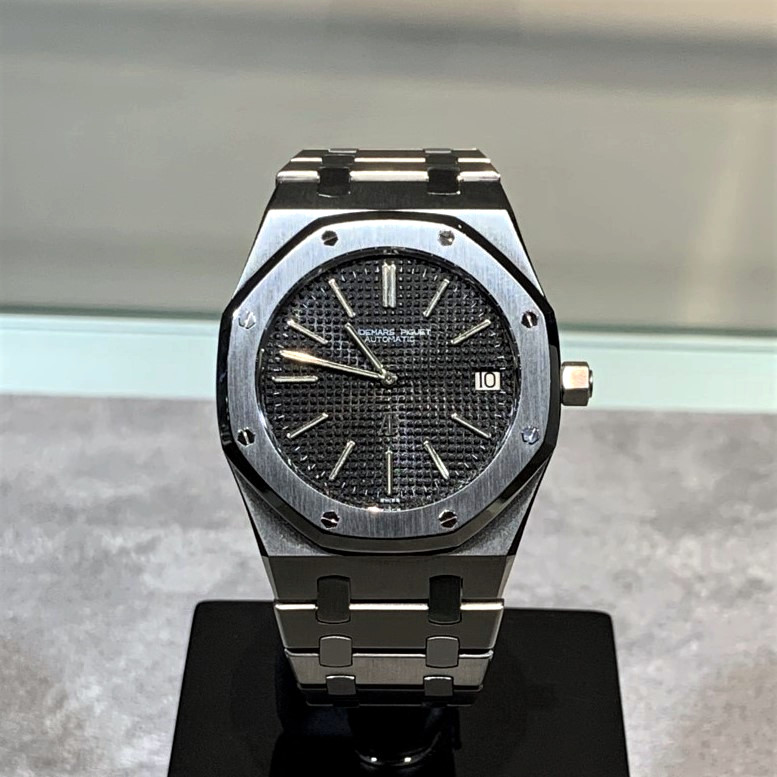When I first started exploring the world of horology with a level of seriousness, no matter where I turned there was one name around every single corner – that of Jean-Claude Biver. The more I learned about this man, the more inspired I became. So, when Phillips auction house announced “Share Respect Forgive”, a tour of some of Biver’s personal watch collection, I felt compelled to go, knowing that the opportunity to see such an incredible collection in one place would not likely come around again.
Firstly, to understand why I felt compelled in this way, let’s take a look at the man himself. He started his career as a young man with Audemars Piguet, where he worked in sales from 1974-1979, during the period when Gerald Genta designed the now infamous Royal Oak – you have to remember here that when the Royal Oak was first released, the idea of a luxury watch made of steel, with an octagonal case and bezel, was not the easy sell it is today! The first year he was there, he learned the art of the craft – taking home half a salary, with no business cards, secretary, office or phone line. Legend has it that the charismatic and entrepreneurial Biver attended his first sales meeting in Germany without a single watch to show, taking the view that ‘before I show you the product, I have to explain who we are, what we do, and our history – if you are still interested… then you can look at the watches’.
He soon became the European Sales Manager for Audemars Piguet, and after 4 years in post he took a series of recommendations to then CEO Georges Golay, who told him he must wait 14 years to make them. This led Biver to join Omega in 1979, where he was Sales & Marketing Manager of Omega’s gold watches for three years until 1981.
With the quartz crisis looming in the 1980s, Biver made perhaps the boldest decision of his life, although in retrospect it might be the kind of move you would expect from the man, given his philosophy of being first, different and unique…
At this time, he was aware that Omega owned the oldest watch company in the world, Blancpain, and in 1981 he and his friend Jacques Piguet purchased the rights to the name of Blancpain for CHF 22,000. They subsequently rebuilt the manufacture from the ground up. In a world where the watch industry was very much moving towards quartz, Biver declared:
“Since 1735 there has never been a quartz Blancpain watch. And there never will be.”
This was in fact the cornerstone of his first appearance with Blancpain at the annual Basel fair in 1984, where the Blancpain stand did not have a single watch! This approach was the first time this had been done, it was different and unique. It was deliberately provocative, but as a means to an end – remember Blancpain were doubling down on mechanical watches in the peak of the quartz crisis. They were made to promise not to repeat this the following year by the fair’s management, and Biver duly obliged – by bringing just one single watch the following year! Another year, borrowing a “FULL” sign from a local restaurant to put outside the stand. Each of these actions caused somewhat of a furore, but each was a first, it was different, and it was unique.

Share Respect Forgive
Over the ten years that followed, such was the success of this approach that Biver sold Blancpain to the Hayek family and The Swatch Group for CHF 60 million – a return of over 2700 times the original investment!
Despite this, Biver did not retire to a life of luxury as many of us might have done, instead continuing to work within the Swatch Group for both Blancpain and Omega. His masterstrokes of this era included reintroducing the story behind Omega’s Speedmaster Moonwatch and putting an Omega on the wrist of none other than 007: James Bond.
These activities contributed to the trebling of turnover between 1993 and the turn of the millennium.
Then, in 2004, Carlos Crocco turned to Biver to help turn little known brand Hublot into the household name it is today. Again, benefiting from his aforementioned philosophy of being first different and unique, he coined “the art of fusion”, for the first time pairing materials like rubber straps and gold cases in a timepiece. Only four years later in 2008, the LVMH Group – which owned TAG Heuer and Zenith amongst others – acquired Hublot for almost half a billion dollars, and subsequently made Jean-Claude Biver the head of the watch division. Here, he continued to advance Hublot, releasing the world’s first 18ct gold alloy that is both resistant to scratches and oxidisation, helped to reinvigorate TAG Heuer’s history by returning some vintage Heuer pieces, introduced the TAG Heuer Connected smartwatch, and upgraded Zenith’s El Primero to the Defy El Primero.
To have tried to sum up this incredible career in such a short overview really does not do it or the man justice, but hopefully it gives a favour as to why Jean-Claude Biver is such an industry icon and an insight into his genius. If you can lay your hands on a copy, I highly recommend a book called ‘Jean-Claude Biver: The Wizard of Swiss Watchmaking – Interviews with Gerard Lélarge’.

Jean-Claude Biver, The Wizard of Swiss Watchmaking - Interviews with Gérard Lelarge
Returning to the focal point of this post, when Phillips announced that some of Biver’s personal watch collection was to be exhibited in London as a part of ‘Share Respect Forgive’, hopefully you now understand a little as to why I felt compelled to go and visit the collection. From various videos such as Hodinkee’s Talking Watches series, I had seen Biver speak so passionately about his collection and learned of the extreme rarity of his pieces, and the chance to see them up close was too good an opportunity to miss.
Share Respect Forgive
So, on to the collection…!
To start with, let’s take a look at the Rolex Daytona Rainbow Everose Gold – one which Biver often remarks surprises people the most when they see it. “I love the colours, they’re bringing happiness and joy…you must be open minded”. The rainbow colours of the stones making up the bezel are echoed in the hour markers on the dial, with diamonds on the lugs and also the crown protectors – he would be the first to say “diamonds are not just for women” too!

Rolex Rainbow Daytona Everose Gold
Continuing with Rolex are these three incredibly rare Cosmograph Zenith Daytona 16520 references, with the so-called mark II bezel featuring the ‘225’ tachymeter graduation. These are extremely rare, and were made during an experimental period of the reference production, and so to see three immaculate examples with different dials together at once is all but unheard of:

Rolex Cosmograph Zenith Daytona 16520, each with mark II bezel
Next, in this shot we feature three absolutely stunning pieces – from left to right: a Philippe Dufour Simplicity, an AkriviA Chronomètre Contemporain, and an F.P. Journe Chronomètre à Résonance
Dufour was a watchmaker at Audemars Piguet when Biver worked there in the 1970s, and so this piece – no180 of the original run of 200 pieces – holds a special place for Biver, serving as a reminder of where it all began. The Akrivia is a platinum piece, and the first from Rexhep Rexhepi, who was trained at Patek Philippe. It was in fact one that Biver put himself on the list for, but on the evening of his 70th birthday it was presented to him by Michael and Henry Tay of The Hour Glass, Asia’s leading retail group of luxury watch brands. It is engraved especially for Jean-Claude Biver as well. The F.P. Journe is the only wristwatch in the world featuring acoustic resonance and crafted by the hand of one of Biver’s close friends. Together these make a fantastic and sentimental trio:

(L) Philippe Dufour Simplicity, (C) Akrivia Chronomètre Contemporain, (R) F.P. Journe Chronomètre à Résonance
Biver’s stunning collection also includes pieces from Blancpain (of course…), a Hublot prototype tourbillon, and this spectacular early Audemars Piguet Royal Oak:

Audemars Piguet Royal Oak
However, the absolute pinnacle – at least in my mind – of this collection has to be the absolutely stunning Perpetual Calendar Chronograph reference 1518 from Patek Philippe. Considered by many as the absolute grail vintage Patek Philippe piece, it was the first serially produced perpetual calendar chronograph from the manufacturer. I think we can all agree that the rose gold case, salmon dial and blued hands combine for a truly beautiful piece, and I can only apologise for the quality of my picture which simply doesn’t do it justice!

Patek Philippe Perpetual Calendar Chronograph reference 1518
Thank you to Phillips Watches in London for a fantastic display and ‘Share Respect Forgive’ exhibition. For further information, check out Jean-Claude Biver: A Retrospective on Phillips.com, or follow the man himself on Instagram @jcbiver
For any questions, please get in touch via our Contact page, or via our Instagram.
You might also be interested in:
- Recommended Reading: ‘The Wizard of Swiss Watchmaking’ – Interviews with Jean-Claude Biver
- In Conversation with Jean-Claude Biver
- Audemars Piguet Royal Oak Exhibit at Harrods
- Watch Stationery and Gift Ideas
- Watch Books, Watch Boxes and more at the Watch Affinity Shop on Amazon (commissions earned)
As an Amazon Associate, I earn from qualifying purchases – thank you for your support

